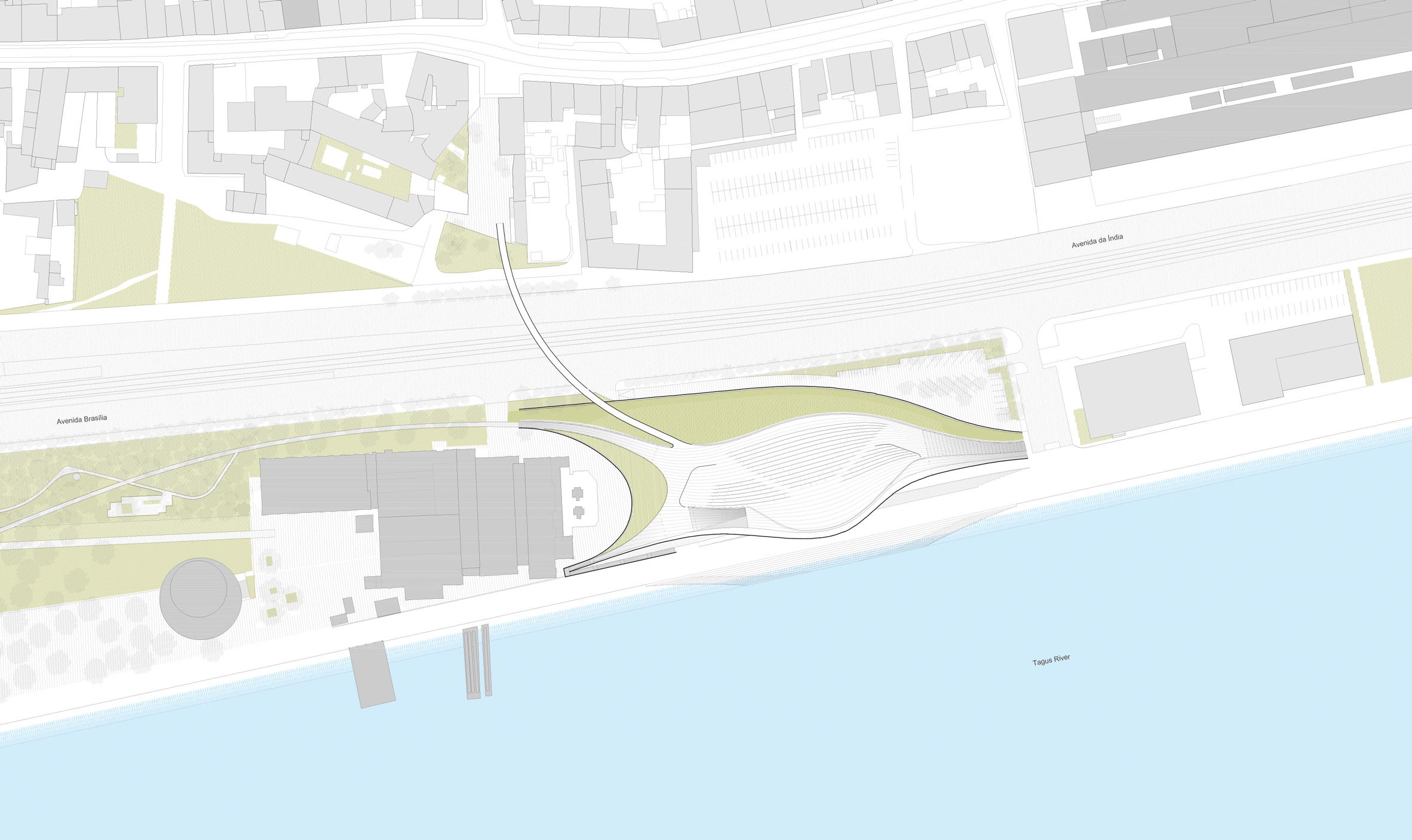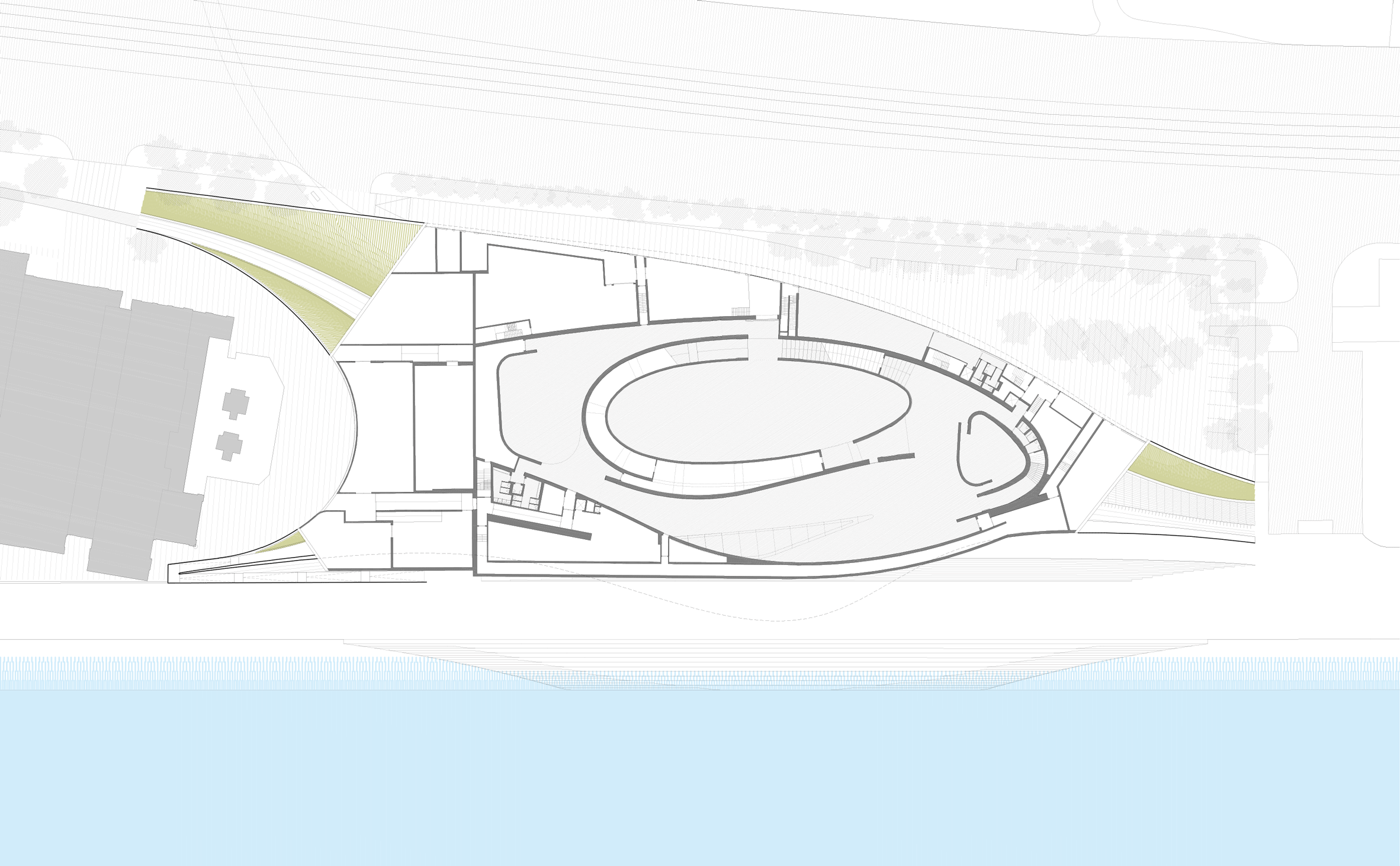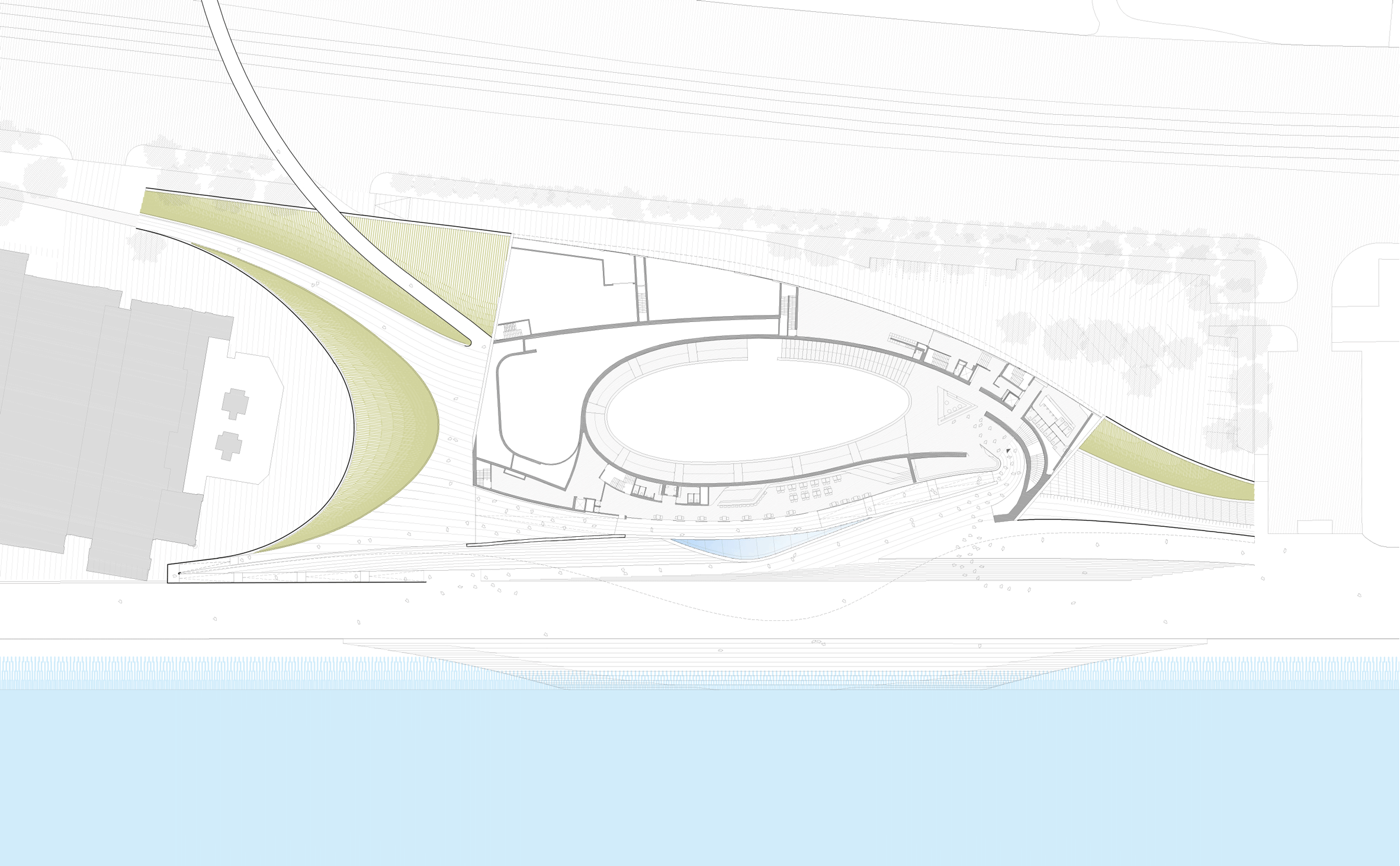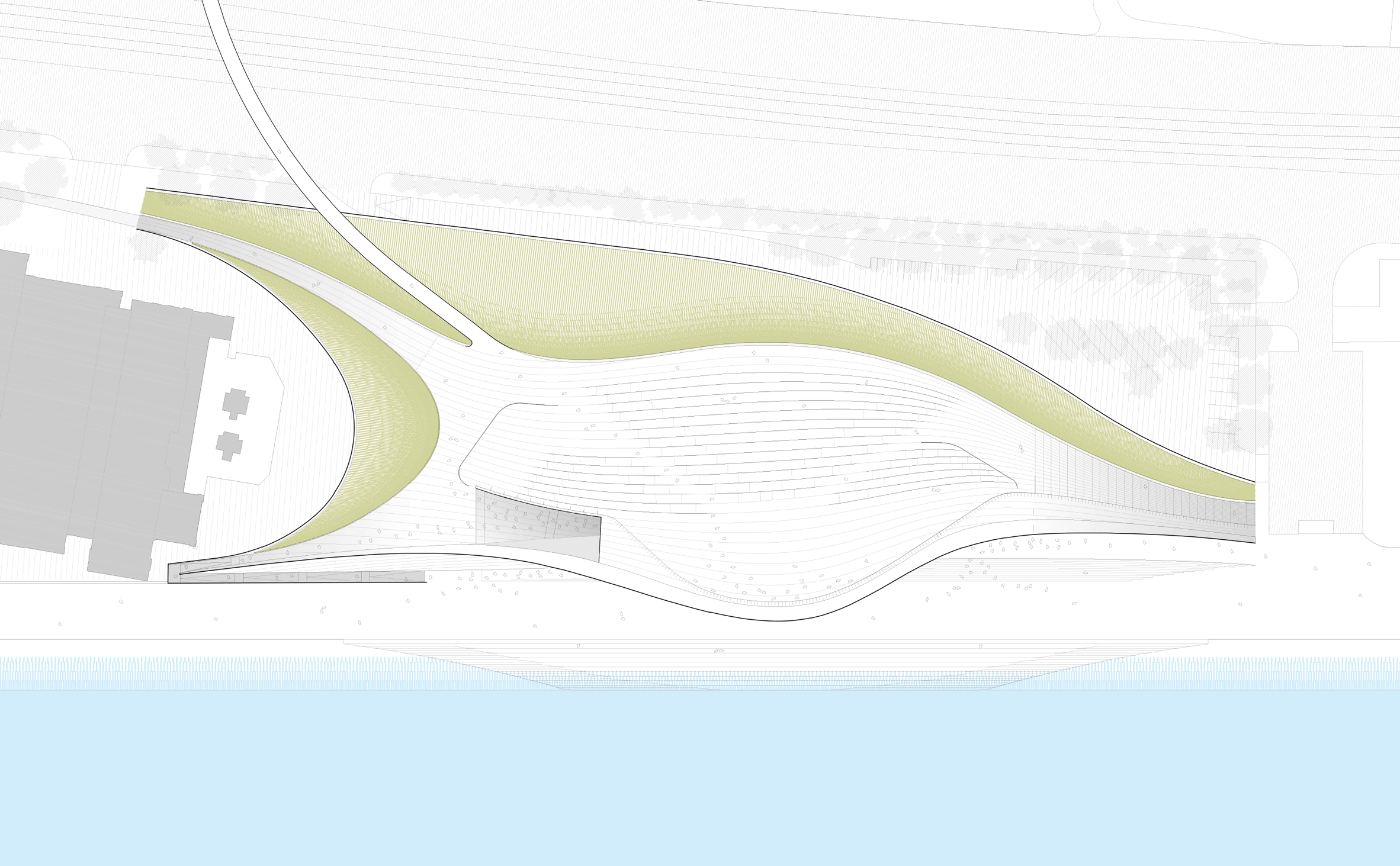Amanda Levete's undulating MAAT museum opens on Lisbon waterfront
The Museum of Art, Architecture and Technology by Amanda Levete's firm AL_A has opened to the public, coinciding with the start of the Lisbon Architecture Triennale.
Called MAAT for short, the contemporary art museum opened to the press on 2 October 2016 but had its public opening on 5 October – the starting date of the city-wide Lisbon Architecture Triennale.
London-based AL_A designed the building for a site on the edge of the Tagus River in Lisbon's Belém district.
Covered in 15,000 white, three-dimensional ceramic tiles, the building boasts an undulating form that connects its grand rooftop terrace with the waterside promenade.
From the cantilevered terrace, visitors can take in views of the Moorish São Jorge Castle on the hillside above and the waterfront below.
"Our inspiration comes from the rippling of the water," AL_A director Maximiliano Arrocet told Dezeen during a tour of the building.
"The idea is that is mimics the colours," he added. "If we see the building at different times of the day it has a different colour."
The MAAT's four galleries are sunken below ground level to keep the height of the building low, in keeping with the surrounding architecture, Arrocet explained.
The building's opening marks the end of the first phase of construction, for which plans were first unveiled in 2011.
Phase two is set to launch in March 2017 with the opening of a pedestrian bridge linking the roof with the street behind the gallery and a restaurant. A park by Vladimir Djurovic Landscape Architecture will also open.
The gallery spaces and finishing of the building will not be fully complete until 2017. But MAAT director Pedro Gadanho said he felt it was important that the public parts of the museum opened as quickly as possible.
The building has already been a hit with visitors and journalists, with hundreds turning out for the public opening yesterday and taking to Instagram to post pictures of the roof.
Gadanho, who was formerly a curator at MoMA in New York, said MAAT would host a range of art and architecture shows at a "semi-intellectual level".
To mark the opening, an installation by artist Dominique Gonzalez-Foerster has been installed in the Oval Gallery – a sunken oval-shaped pit surrounded by a ramped walkway.
It is the first part of a wider exhibition named Utopia/Dystopia, which will continue in March 2017, when MAAT officially completes.
The three other galleries will be filled with over 60 works by artists and architects from the 1970s to present day, including OMA, Aldo Rossi and Yona Friedman.
"MAAT will be a cultural space of discovery, critical thinking and global dialogue," said Gadanho.
"It will not only support the work of Portuguese artists and curators, but will also offer them a platform to connect with the international art community," he added.
The MAAT also occupies the recently renovated Central Tejo power station next door.
The red brick former thermoelectric plant closed its doors in 1975, but has now been converted into gallery space.
It's first exhibition is The World of Charles and Ray Eames, which was first shown at the Barbican Centre in London last year.
The power station's courtyard is also being used as one of the main exhibition sites for the Lisbon Architecture Triennale 2016, which opened yesterday and continues until 11 December 2016.
AL_A was commissioned for the project by not-for-profit organisation EDP Foundation as the centrepiece of a 3.8-hectare waterside art campus.
The London firm was set up in 2009 by architects Amanda Levete, Ho-Yin Ng, Alice Dietsch and Maximiliano Arrocet.




